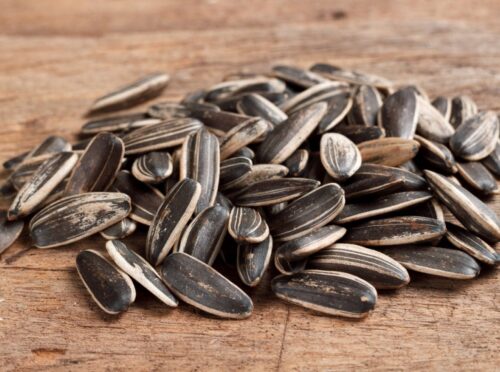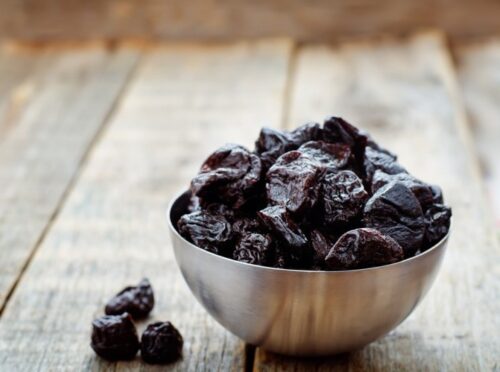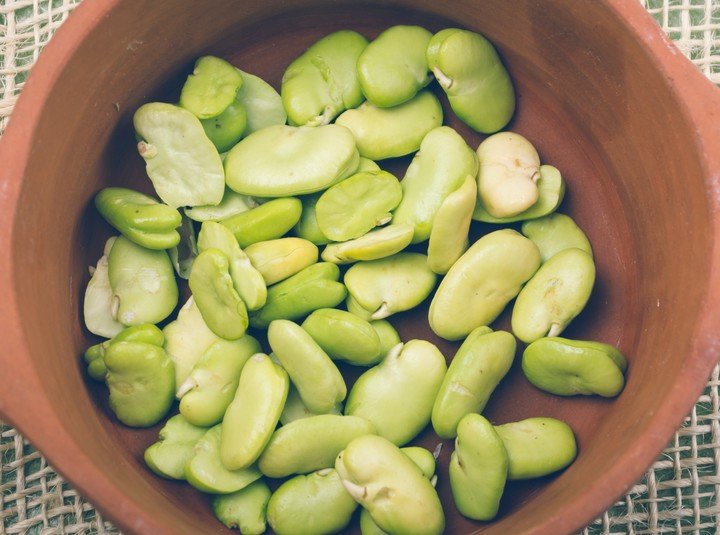17 Iron-Rich Foods + How To Know If You’re Deficient
Looking for iron-rich foods or wondering if you’re deficient or not? This article will help you discover the most iron-rich foods on the planet and much more!
Over 2 billion people in the world suffer from iron deficiency…
That is over 30% of the world’s population! It’s also especially common in women.
That’s pretty serious considering how maddeningly little it is talked about.
What are the common signs of it?
- Extreme fatigue and exhaustion
- Pale skin
- Restless leg syndrome (the need to bouncing or moving the legs)
- Hair loss
- Frequent infections
Who is the most likely to suffer?
Vegans, vegetarians, and women, in general, are all more likely to be iron-deficient and suffer from anemia.
These populations usually avoid meat, which is the most common source of iron. While meat is nutritionally okay to eat if it is all-natural and grass-fed, most people eat highly-processed meats, which present a whole host of health issues.
This is why this list avoids meat and is focused on plant foods. The foods listed below are plant-based sources of iron that are nutritious and delicious.
If you suspect that you may be iron-deficient or have been confirmed by a doctor, then eating these iron-rich foods could change how you feel, how you look, and your overall well-being.
This post may contain affiliate links, which helps keep this content free. Please read our disclosure for more info.
1. Sesame Seeds
In addition to iron, sesame seeds are also very rich in copper, containing 163% of the daily recommended value. Sesame seeds also contain sesamin and sesamolin, which have been shown to lower cholesterol.
The well-known phrase “Open Sesame” stemmed from the sesame seed pod, which opens upon maturity.
1/4 cup (2 oz) contains 29% of the recommended daily value in iron.
2. Black Beans
Beans are not only one of the healthiest foods on our planet, but they also contain a solid amount of iron. When buying, make sure to avoid the canned beans if you can or at least go for organic.
Dry, whole beans are best, but they do require soaking overnight for the best taste.
1/2 cup (4 oz) contains 44% of the recommended daily value in iron.
3. Cooked Spinach

#3 on the list of iron-rich foods was Popeye’s favorite treat.
Most foods lose vital nutrients, minerals, and vitamins through the cooking process… but not spinach. As far as iron is concerned, cooking spinach actually increases the quantity of iron.
Fresh spinach that is then cooked is best, but frozen spinach also works great in a pinch!
1 cup (8 oz) contains 36% of the recommended daily value in iron.
4. Dark Chocolate
While it is common knowledge that high-quality dark chocolate (85% cocoa and up) is good for the body, many people don’t know it’s high in iron. Keep this chocolate ready next time you’re feeling any serious sugar cravings.
The best place to get your dark chocolate fix is with Green and Black’s Organic Chocolate Bars.
They are very high quality, and you’ll notice you only need 1-2 squares to feel satisfied.
1 bar (8 oz) contains 72% of the recommended daily value in iron.
5. Garbanzo Beans
Garbanzo beans, also called chickpeas, are what makes up the popular snack food hummus.
They’re high in iron as well as fiber. 1 cup provides 50% of the daily recommended value of fiber.
Garbanzo beans have also been shown in recent studies to reduce appetite. People felt fuller on average when their meals contained garbanzo beans.
1 bar (8 oz) contains 26% of the recommended daily value in iron.
6. Kale

Kale is a great source of iron, especially if you’re looking to avoid added calories. It does not have to be boring either because you can add it to soup or get some crunchy kale chips to liven it up.
You can also make kale chips at home too by covering the kale in olive oil and baking it in the oven! If you don’t like the taste, you can also add it to smoothies!
1 cup (8 oz) provides 5% of the recommended daily value in iron.
7. Sun-Dried Tomatoes
Not only are they mouth-wateringly delicious, but sun-dried tomatoes are also filled with lycopene and iron. So you get an extra antioxidant boost and more iron into your diet.
Try to look for the dried version in the produce section of the grocery store. The canned version usually contains far too much oil.
1 cup (8 oz) provides 27% of the recommended daily value in iron.
8. Kidney Beans
These red beans are also a high source of cholesterol-lowering fiber as well as iron. They are also high in folate, copper, manganese and are a great source of fat-free protein.
Try a great New Orleans Red Beans & Rice dish for kidney beans!
1 cup (8 oz) provides 22% of the recommended daily value in iron.
9. Sunflower Seeds

#9 on this list of iron-rich foods makes for an easy snack.
These also contain high amounts of vitamin E and other minerals. They make a great snack item for work and will also help you suppress your appetite naturally.
Don’t buy the sunflower seeds at the store which are cooked in nasty oils and LOADED with sodium. Go for a brand like Braga Organic Farms Organic Sunflower Seeds which packs the sunflower seeds fresh!
1 cup (8 oz) provides 47% of the recommended daily value in iron.
10. Swiss Chard
This beautiful leafy vegetable contains a wide range of antioxidants, many of which come from the multi-pigmented stems. One of which is called syringic acid and is known to help regulate blood sugar.
Chard is also extremely high in Vitamin K, providing 636% of the daily recommended value in 1 serving.
1 cup (8 oz) provides 22% of the recommended daily value in iron.
11. Lentils
Lentils also contain protein and many of the essential amino acids needed in the diet. The best way to add them to the diet is through soups, stews, and pasta.
If you tend to avoid beans because of digestive or fiber issues, you may want to try some lentils. They are generally a little easier to digest than their other bean cousins.
1 cup (8 oz) provides 37% of the recommended daily value in iron.
12. Prunes

We eat them as babies, and then most people tend to shun these for the rest of their lives. Well, prunes are making a comeback with their high stores of vitamin C and iron.
The easiest way to get prunes in the diet is to try prune juice, which is sold at many local grocers! You can also add them to all sorts of recipes if you don’t like to eat them on their own.
1 cup (8 oz) provides 17% of the recommended daily value in iron.
13. Potatoes
These are one of the best foods around for providing sustained energy and healthy fiber for the body. Sweet potatoes are the healthiest as far as all spuds are concerned. However, almost any potato on the market will be high in iron.
These made it onto our list of the 23 healthiest superfoods to add to your diet. They’re also very inexpensive, which makes them a great staple if you’re on a budget!
1 medium potato has 18% of the recommended daily value in iron.
14. Olives
Olives are actually a fruit, not a vegetable as commonly thought, that grows on trees that live for hundreds of years. They are generally too bitter to be eaten right off the tree and are cured to taste better.
In addition to being a good source of iron, olives are rich in the phytonutrient, Hydroxytyrosol, which is known for its benefits in cancer and bone loss prevention.
1 cup (8 oz) provides 25% of the recommended daily value in iron.
15. Lima Beans

An excellent source of fiber, molybdenum, copper, and manganese, lima beans made it onto the list of iron-rich foods.
Wash them thoroughly, and make sure to pre-soak them before cooking, because this will reduce the oligosaccharides in them commonly associated with flatulence.
Try these in soup with some zucchini, carrots, and onions to get some extra nutrients in your diet!
1 cup (8 oz) provides 25% of the recommended daily value in iron.
16. Black Eyed Peas
Also high in magnesium and vitamin A, black-eyed peas are a great source of iron in any diet. They are best cooked when boiled or soaked overnight to keep nutrient value.
These are also great in bean and vegetable soups or as a side dish to meat. You can also mix bacon with them if you want a little extra flavor.
1 cup (8 oz) provides 24% of the recommended daily value in iron.
17. Peas
#17 on our list of iron-rich foods is another great snack you can enjoy by itself.
Peas are great when compared to other vegetables because they have a slightly sweeter taste and are more enjoyable. You can freeze them, stew them, or eat them raw.
1 cup (8 oz) provides 17% of the recommended daily value in iron.
While the following 4 foods have a lower concentration of iron, they are still important to add to the list of iron-rich foods, because iron is actually a pretty rare substance in foods.
It’s a good rule of thumb to eat any source of it that you can, because of its rarity and the fact that so many people are deficient in this powerful nutrient.
Pumpkin Seeds
Not just a treat for the holidays, organic pumpkin seeds are high in iron and a delicious treat. They make a great healthy snack item while at work or just during a normal busy day.
1 handful (1 oz) contains 5% of the recommended daily value in iron.
Strawberries
Another delicious treat that helps to increase iron in the body are strawberries. Freshly picked strawberries contain high antioxidants and are great as a breakfast item or in a healthy smoothie!
1 cup (8 oz) contains 5% of the recommended daily value in iron.
Collard Greens
These also contain high amounts of vitamin A, calcium, and vitamin C. When selecting, make sure to pick the leaves that are the deepest and darkest shades of green, because they will have more nutrients.
1 cup (8 oz) provides 2% of the recommended daily value in iron.
Brown Rice
This food is a complex carbohydrate that provides the body with sustained energy throughout the day. This food is best used during lunch to prevent midday energy crashes and provide fullness from its fiber.
1 cup (8 oz) provides 5% of the recommended daily value in iron.
Leave a comment below if you enjoyed this article on iron-rich foods and how to tell if you’re deficient or have any questions!

Thanks for the useful information.
Thanks for the info. I’ve heard about iron deficiency and anemia before and tried to get more iron in my diet, but I always forget. These foods will help.